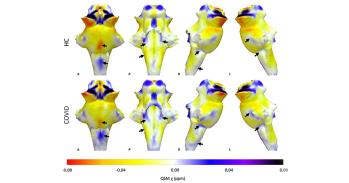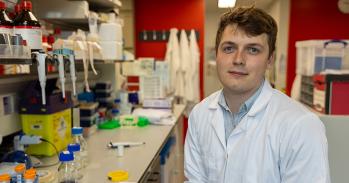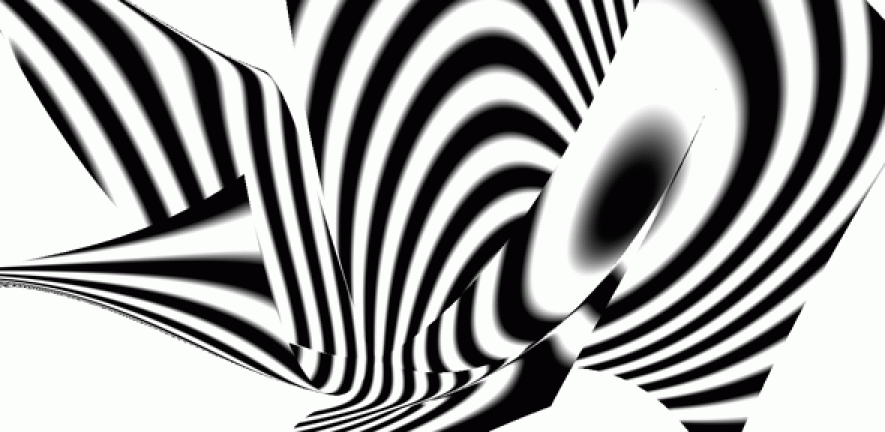
Aircraft designers and animators use different digital technologies to achieve the same goal: creating a three-dimensional image that can be manipulated. But a new method that links the two could vastly speed up how product designers create and simulate the performance of their products.
Aircraft designers and animators use different digital technologies to achieve the same goal: creating a three-dimensional image that can be manipulated. But a new method that links the two could vastly speed up how product designers create and simulate the performance of their products.
Suddenly, we had a method that theoretically offered the manufacturing industry the flexibility the artists enjoy in subdivision
Neil Dodgson
The adventures of Woody and Buzz Lightyear have been charming children – and adults – worldwide for 20 years this year. As well as a razor-sharp, hilarious script, Toy Story was the first full-length feature film made entirely using computer-generated imagery, marking the arrival of a new way of creating visual effects in three dimensions.
But the underlying mathematics that brought the toys to life, and continues to be used by a thriving visual effects industry, has actually been around since the 1960s. It’s embedded in how the automotive, aeronautical and other manufacturing industries design their products.
The two branches of design – called subdivision surfaces (used by animators) and Non-Uniform Rational B-Splines (NURBS, used by the manufacturing industry) – have the same mathematical roots, but they have evolved in different directions.
Recently, however, researchers at Cambridge’s Computer Laboratory have found a way to reconcile the two divergent paths, enabling product designers to access the easier and less-constraining tools used by the animation industry.
This all sounds like good news for the product designers. But, as lead researcher Neil Dodgson, Professor of Graphics and Imaging, explained, “there is understandable caution. Although the method used by designers gives greater freedom and increased usability, manufacturers have a back catalogue of existing models and around 45 years of experience. A move away from the method used by the manufacturing industry has to be sufficiently advantageous to warrant making.” Dodgson believes that current research is providing that advantage.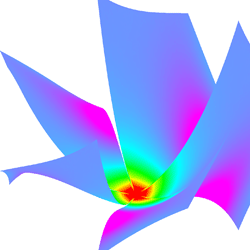
The NURBS method was developed at a time when computers were very limited in their capabilities; by the time the subdivision surface method was commercialised, in the late 1990s, computers had vastly increased memories and processing power.
Essentially, the two methods address different priorities. When animators model three-dimensional surfaces, they want ease of design and their ‘product’ lives only on the screen. An engineer, by contrast, needs a design tool that is mathematically able to handle a wide range of requirements, including specifying cutting paths, mould shapes and objects that can actually be manufactured.
Dodgson’s team’s first breakthrough was to demonstrate, in 2009, a mathematical framework that made NURBS compatible with subdivision methods. Like a ‘bolt-on’ application, NURBS-based design could be imported to subdivision methods at the press of a button.
“It had been thought that the two methods had diverged so much as to be incompatible. Suddenly, we had a method that theoretically offered the manufacturing industry the flexibility the artists enjoy in subdivision. But the ‘theoretically’ is important… in practice there were two stumbling blocks.”
With funding from the Engineering and Physical Sciences Research Council, his team has spent the past few years ironing out the problems. Ironically, one of the problems was to make creasing possible.
Take the Mercedes car. Part of its distinctive shape is the presence of two furrowed creases running the length of the hood. In fact, almost all cars have a crease somewhere. The NURBS method can accomplish this, and so can the animators’ subdivision method, but the researchers’ NURBS-compatible subdivision method had cases that just did not work. Now, however, the problem of creasing has been solved by Dr Jirí Kosinka.
The second challenge was to enable ‘trimming’. In NURBS design, holes and complicated joins are often made by mathematically trimming away part of the NURBS surface, which adds a further layer of mathematical complexity on top of the basic NURBS method. Subdivision does not need trimming, because it has the flexibility to allow holes and complex joins within its basic mathematical structure.
PhD student Jingjing Shen has tackled this problem by developing a method that will convert a trimmed NURBS surface to an ordinary, untrimmed, subdivision surface. Her current challenge is to extend this work from ordinary subdivision to NURBS-compatible subdivision.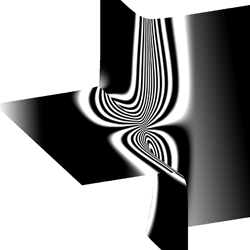
“So will the industry take up our method? Well, a new piece of research might help persuade them,” said Dodgson. While the researchers in Cambridge were perfecting their conversion method, researchers in Europe and the USA have spent a decade developing a computational approach called isogeometric analysis (IGA) that would allow manufacturers to carry out design and simulation using the same tools.
New designs of products such as cars, planes and ships have to be rigorously tested using simulation software to be sure they will work – and work safely – once manufactured. At the moment, it is necessary to convert data from NURBS into a different geometrical representation for the analysis and testing phase. The engineers carrying out the analysis have to take the NURBS designs and then spend weeks or months creating new models that can be fed into the simulation system.
“Although IGA would enormously speed this process up, it cannot be used by product designers because it hasn’t been able to handle trimming,” said Dodgson. “We think we offer a way to avoid this problem.” Dodgson’s Austrian collaborators have recently developed IGA for subdivision surfaces and Dodgson suggests that the trimming problem can be completely avoided with Shen’s method for converting trimmed NURBS to untrimmed subdivision for analysis.
Dodgson points towards the example of a leaky teapot as an indication of how important the link between design and analysis is. When a teapot is designed using NURBS, the cutting and trimming needed to fit a spout to the body of the teapot leaves a tiny gap at one edge of the join. The same would be true for fitting the nose of an aeroplane to the body.
“At the production stage, these gaps don’t matter because the gaps are truly tiny. At sub-micrometer in size, they are smaller than the machining tools can cope with, so they simply vanish in the actual product,” he explained.
“But before you get to the production stage, when the design is going through simulation testing, they do matter. Any gap in a teapot would cause it to leak, in theory, and so the software throws up errors.”
Dodgson believes that his conversion method can solve these difficulties: “When you convert from trimmed NURBS to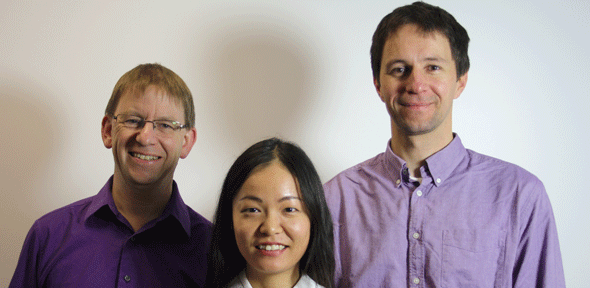 subdivision, the gaps vanish: there is a true mathematical join between previously disjointed surfaces.”
subdivision, the gaps vanish: there is a true mathematical join between previously disjointed surfaces.”
He added: “This, combined with IGA, and subdivision’s increased flexibility and usability, all look very promising for being able to design and analyse automatically, and quickly feed the results back into re-design.” The researchers believe that the new process they are developing could make a vast difference to manufacturing design. Or, in the words of Buzz Lightyear, to infinity and beyond.
Inset images: credit: Jirí Kosinka
The text in this work is licensed under a Creative Commons Licence. If you use this content on your site please link back to this page. For image rights, please see the credits associated with each individual image.



